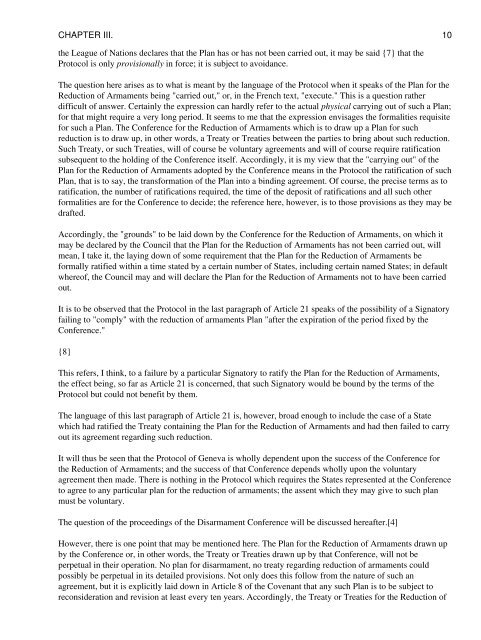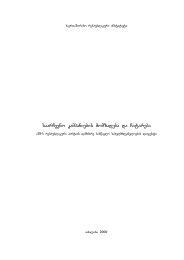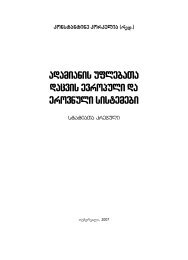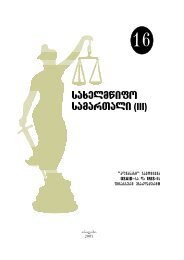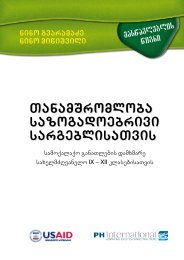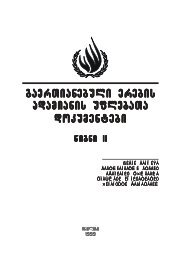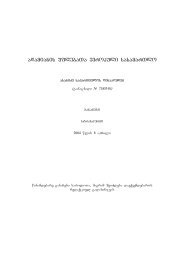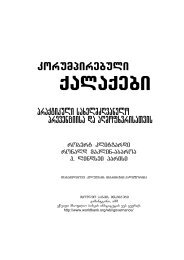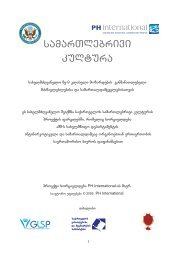The Geneva Protocol, by David Hunter Miller
The Geneva Protocol, by David Hunter Miller
The Geneva Protocol, by David Hunter Miller
You also want an ePaper? Increase the reach of your titles
YUMPU automatically turns print PDFs into web optimized ePapers that Google loves.
CHAPTER III. 10<br />
the League of Nations declares that the Plan has or has not been carried out, it may be said {7} that the<br />
<strong>Protocol</strong> is only provisionally in force; it is subject to avoidance.<br />
<strong>The</strong> question here arises as to what is meant <strong>by</strong> the language of the <strong>Protocol</strong> when it speaks of the Plan for the<br />
Reduction of Armaments being "carried out," or, in the French text, "execute." This is a question rather<br />
difficult of answer. Certainly the expression can hardly refer to the actual physical carrying out of such a Plan;<br />
for that might require a very long period. It seems to me that the expression envisages the formalities requisite<br />
for such a Plan. <strong>The</strong> Conference for the Reduction of Armaments which is to draw up a Plan for such<br />
reduction is to draw up, in other words, a Treaty or Treaties between the parties to bring about such reduction.<br />
Such Treaty, or such Treaties, will of course be voluntary agreements and will of course require ratification<br />
subsequent to the holding of the Conference itself. Accordingly, it is my view that the "carrying out" of the<br />
Plan for the Reduction of Armaments adopted <strong>by</strong> the Conference means in the <strong>Protocol</strong> the ratification of such<br />
Plan, that is to say, the transformation of the Plan into a binding agreement. Of course, the precise terms as to<br />
ratification, the number of ratifications required, the time of the deposit of ratifications and all such other<br />
formalities are for the Conference to decide; the reference here, however, is to those provisions as they may be<br />
drafted.<br />
Accordingly, the "grounds" to be laid down <strong>by</strong> the Conference for the Reduction of Armaments, on which it<br />
may be declared <strong>by</strong> the Council that the Plan for the Reduction of Armaments has not been carried out, will<br />
mean, I take it, the laying down of some requirement that the Plan for the Reduction of Armaments be<br />
formally ratified within a time stated <strong>by</strong> a certain number of States, including certain named States; in default<br />
whereof, the Council may and will declare the Plan for the Reduction of Armaments not to have been carried<br />
out.<br />
It is to be observed that the <strong>Protocol</strong> in the last paragraph of Article 21 speaks of the possibility of a Signatory<br />
failing to "comply" with the reduction of armaments Plan "after the expiration of the period fixed <strong>by</strong> the<br />
Conference."<br />
{8}<br />
This refers, I think, to a failure <strong>by</strong> a particular Signatory to ratify the Plan for the Reduction of Armaments,<br />
the effect being, so far as Article 21 is concerned, that such Signatory would be bound <strong>by</strong> the terms of the<br />
<strong>Protocol</strong> but could not benefit <strong>by</strong> them.<br />
<strong>The</strong> language of this last paragraph of Article 21 is, however, broad enough to include the case of a State<br />
which had ratified the Treaty containing the Plan for the Reduction of Armaments and had then failed to carry<br />
out its agreement regarding such reduction.<br />
It will thus be seen that the <strong>Protocol</strong> of <strong>Geneva</strong> is wholly dependent upon the success of the Conference for<br />
the Reduction of Armaments; and the success of that Conference depends wholly upon the voluntary<br />
agreement then made. <strong>The</strong>re is nothing in the <strong>Protocol</strong> which requires the States represented at the Conference<br />
to agree to any particular plan for the reduction of armaments; the assent which they may give to such plan<br />
must be voluntary.<br />
<strong>The</strong> question of the proceedings of the Disarmament Conference will be discussed hereafter.[4]<br />
However, there is one point that may be mentioned here. <strong>The</strong> Plan for the Reduction of Armaments drawn up<br />
<strong>by</strong> the Conference or, in other words, the Treaty or Treaties drawn up <strong>by</strong> that Conference, will not be<br />
perpetual in their operation. No plan for disarmament, no treaty regarding reduction of armaments could<br />
possibly be perpetual in its detailed provisions. Not only does this follow from the nature of such an<br />
agreement, but it is explicitly laid down in Article 8 of the Covenant that any such Plan is to be subject to<br />
reconsideration and revision at least every ten years. Accordingly, the Treaty or Treaties for the Reduction of


